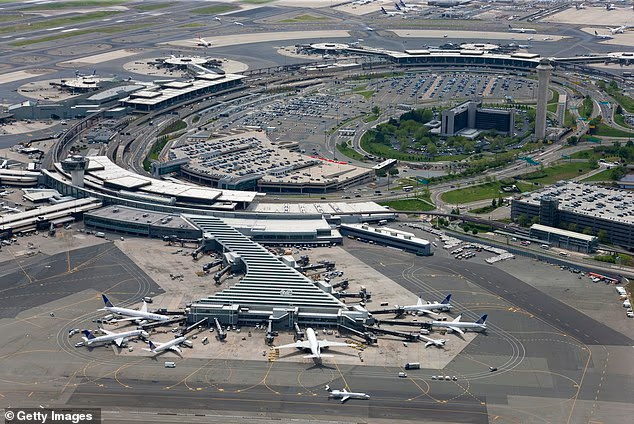On Tuesday night, the Federal Aviation Administration (FAA) had to ground planes at many major airports on the East Coast and in Texas. This was because strong thunderstorms were moving across large parts of the country. The sudden and severe weather caused a chain reaction of problems and delays that drove the U.S. air transportation industry utterly nuts. Some of the busiest airports in the country that were affected were John F. Kennedy International Airport (JFK) in New York, Newark Liberty International Airport in New Jersey, and Baltimore/Washington International Thurgood Marshall Airport.
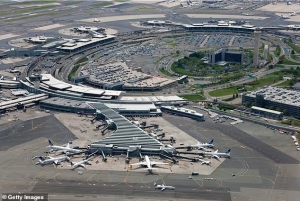
The FAA ordered all flights to stop at Dallas Fort Worth International Airport (DFW), Ronald Reagan Washington National Airport (DCA), and Baltimore/Washington International Airport (BWI). Long waits on the ground made things worse for both passengers and airport workers at the same time. They made things take longer and made planning more difficult. Both Philadelphia International Airport and New York’s LaGuardia Airport (LGA) had problems with their operations, and delays were likely to last all night.
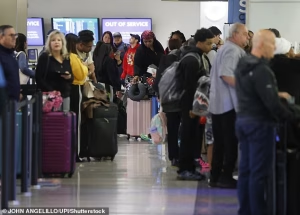
At first, the storm impacted the Northeast the hardest. There were no flights from BWI or DCA until at least 5:30 PM ET. Operations at Newark and JFK were put on hold until about 5:15 PM ET. People who were headed to Dallas were told to stay on the ground until after 9:00 PM ET. Even though the first grounding orders were lifted, there were still long delays until Wednesday, July 9th.
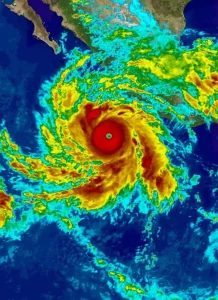
By late afternoon, the average wait time for planes leaving JFK was more than two hours and seven minutes. People at LaGuardia and Newark had to wait more than 90 minutes and three hours, respectively. Thunderstorms not only hit the East Coast, but they also stopped planes at Denver International Airport for a short time. The FAA stopped aircraft to Washington Dulles International Airport (IAD), a major transportation hub in the US, until 5:30 PM ET.
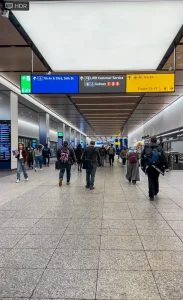
As the weather got worse, more and more flights were canceled. More than 1,100 flights had been canceled across the country by 5:00 PM ET, and more than 26,000 others were late or experienced problems. On average, people have to wait more than thirty minutes at most big airports. In less than two weeks, this is the second big flight delay due to bad weather. The first one caused thousands of flights around the East Coast to be canceled on June 30.
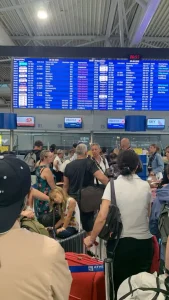
People on the bus were outraged right away. A visitor commented on social media site X that their trip back to DFW was unexpectedly called off. They changed their route to LaGuardia and parked, but then they were stuck with only a vague promise of updates every hour.
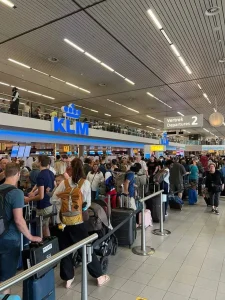
Experts in travel believe that travelers should do something when things go wrong like this. Jesse Neugarten, who established Dollar Flight Club, said that passengers should keep a close check on the airline’s app or website because many airlines offer rebooking options right away when flights are canceled, even before they alert passengers. He also said that you might phone customer service hotlines in other countries, such Canada or the UK. These often have lower wait times, but they can still help you book flights in the US.
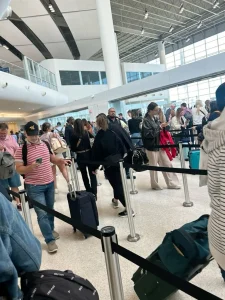
Neugarten highlighted how crucial it was to act quickly. He noted that travelers who book their flights again early typically acquire the last few seats on other planes. This means they don’t have to wait long or stay at the airport overnight. As the lines at domestic customer care counters got longer and longer, a lot of individuals figured out that international contact centers were a good method to get around the problem.
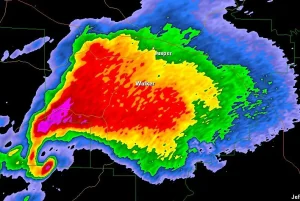
Unfortunately, the picture doesn’t look good for the immediate future. AccuWeather said that the storm could cause travel disruptions all week long. There is still a chance of flash flooding in Texas cities including Dallas, Austin, and San Antonio.
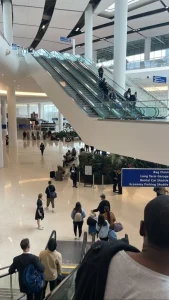
The Mid-Atlantic region, which encompasses Virginia, Georgia, and the Carolinas, is expected to have more severe thunderstorms.
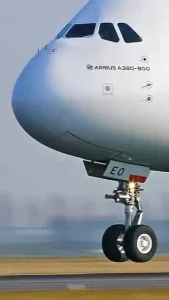
Rain is likely to resume falling on Thursday and Friday. This could make air travel troubles continue longer in the busy Northeast corridor, which includes New York, New Jersey, Pennsylvania, Maryland, and Washington, D.C.

